Storms promote insect diversity in forests
Long-term studies following the major storms Vivian and Lothar show that most insects and other arthropods benefit sustainably from such disturbances. In particular for deadwood-dwelling and endangered species, uncleared storm-damaged areas are highly valuable.
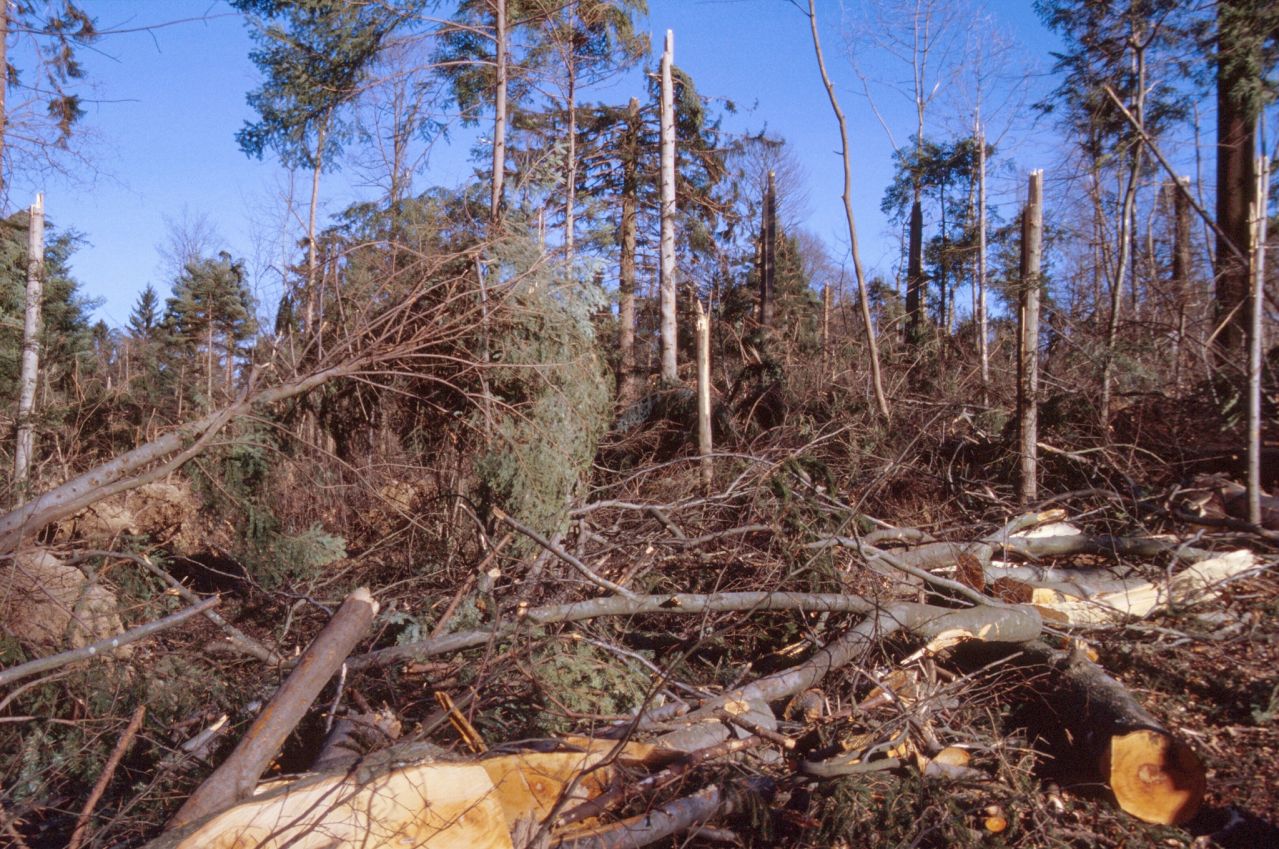
Windthrow area near Zurich two months after storm Lothar. Image: © Beat Wermelinger
Uprooted and broken trees from the storm (so-called windthrow), trunks lying crisscross, blocked roads and paths – for us, a terrible sight. Nature sees it differently. Decades-long studies of invertebrates in various storm-damaged areas in Switzerland have shown that nature is well adapted to such events and that the number of insect and spider species in such windthrow areas is significantly higher than in an intact forest.
Normally, overthrown trees are harvested as quickly as possible after a storm. This measure leads to a change in the arthropod communities compared to untouched windthrows. A mosaic of cleared and uncleared areas therefore promotes biodiversity the most.
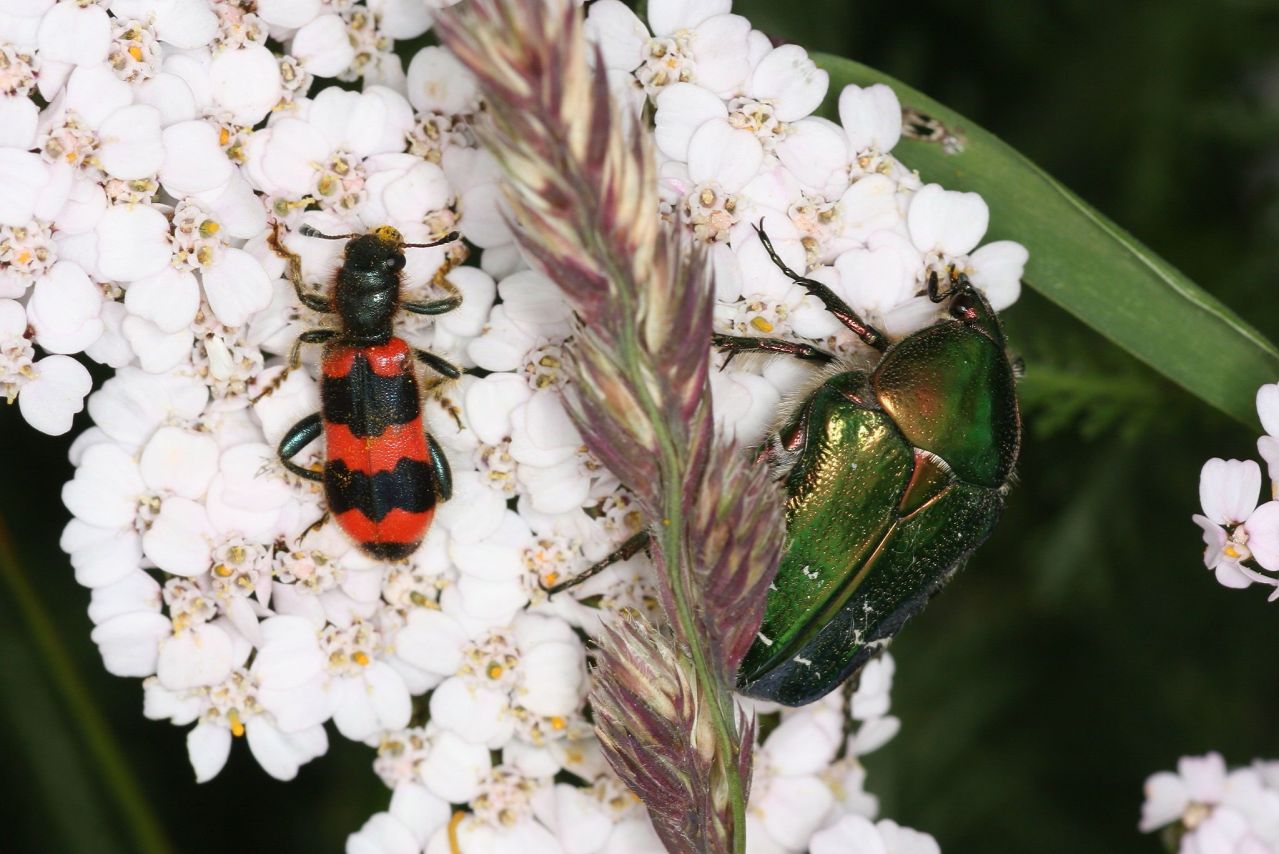
Trichodes apiarius (a checkered beetle species) and Cetonia aurata (the rose chafer) were found almost exclusively in the open storm areas. Image: © Beat Wermelinger
The "catastrophe" of a storm
Natural disasters usually have negative economic and social consequences for humans. A windthrow in a forest can significantly affect timber yield, forest planning, or protective functions. For nature, such ecological disturbances are a normal occurrence in natural forest dynamics. This became clear through forest research following the two storms, Vivian (1990) and Lothar (1999).
Typically, storm-damaged wood is removed as quickly as possible to prevent bark beetle infestation and to make the areas accessible for replanting. However, the ecological consequences for insects living in these windthrow areas were largely unknown. Therefore, the Swiss Federal Institute for Forest, Snow and Landscape Research (WSL) initiated a project to compare the long-term development of the insect fauna in uncleared windthrow areas with that in traditionally cleared areas and intact forests.
What exactly was studied?
During the first two decades after each storm, researchers set up different insect traps at regular intervals in three Vivian-affected areas in the Alps and three Lothar-damaged sites in the Central Plateau. These traps were emptied regularly throughout the vegetation period, and the captured insects, spiders, and woodlice were identified and counted.
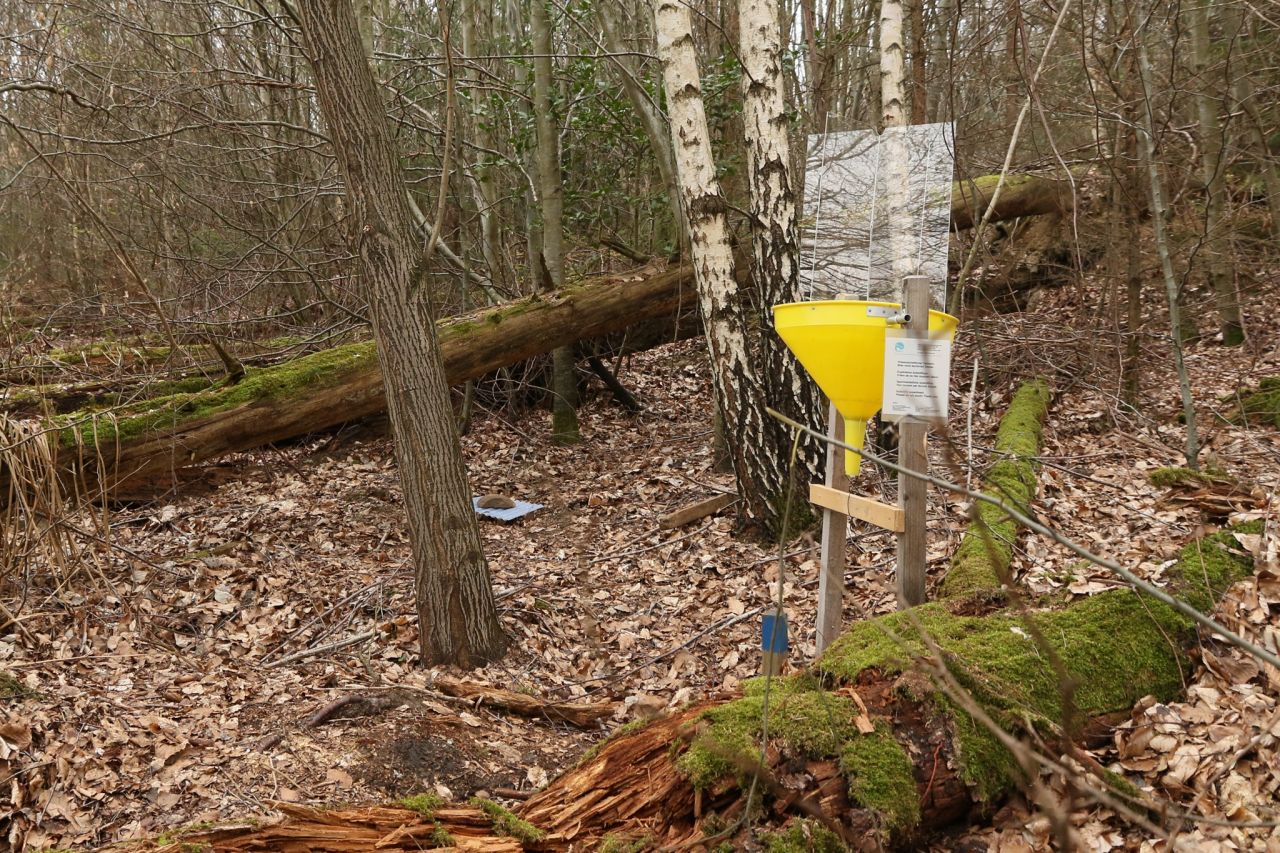
20 years after the storm Lothar, a dense forest has regenerated. The pitfall trap (center back) captures surface-active species, and the combination trap (front right) catches flying and plant-pollinating insects. Image: © Beat Wermelinger
How does a storm affect insect numbers?
In total, more than 500 000 individuals from over 1600 species were analyzed. The storm-affected areas had 50% more species than the intact reference forest. This applies to a wide variety of functional groups, including herbivores, saproxylics (wood dwellers), detritivores (organisms that feed on dead material), pollinators, and predatory species. Rare and endangered species also benefit significantly from the new habitats. However, the storm areas also had a higher presence of bark beetle species with damage potential.

Example of a weekly catch from a combination trap, including various beetles, true bugs, and wasps. Image: © Beat Wermelinger
What are the consequences of wood removal?
Harvesting the windthrown stems (roots and small branches usually remain on site) results in both mechanical soil disturbance and the removal of resources (deadwood). Over 1500 beetle species alone depend on deadwood. As a result, wood-dwelling insects are significantly more frequent in uncleared windthrows than in cleared areas.
Overall, the number of insect species is about the same in both types of clearing treatments, but the species composition differs. Up to 20% of all species in the study were found only in areas where the wood was left untouched. Conversely, about 10% of species were found exclusively in cleared areas. This means that both types of windthrow habitats contribute to biodiversity. Specialists found that only in intact forests made up only about 6% of all species recorded.
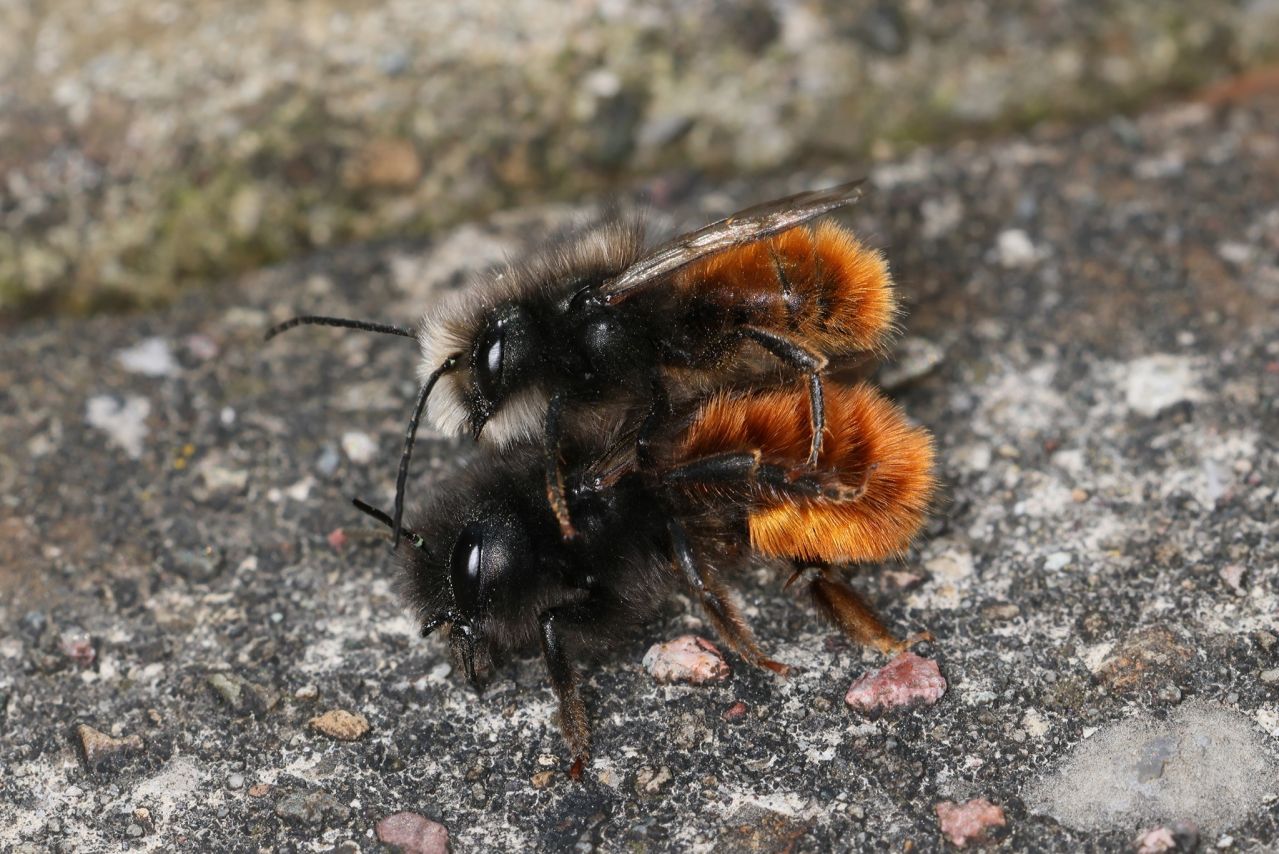
The European orchard bee (Osmia cornuta) was found only in uncleared windthrows. Image: © Beat Wermelinger
Increasing value with age
The peak in the number of species and individuals occurs two to four years after a storm. After that, pioneer trees start to grow, gradually making the habitat shadier. As a result, insect abundance declines significantly, although species diversity remains high for a longer period.
Endangered, wood-dwelling species especially benefit from the large supply of slowly decaying wood in uncleared storm areas. Thick, decaying trunks are rare in most Swiss forests but provide a vital habitat for many endangered organisms.
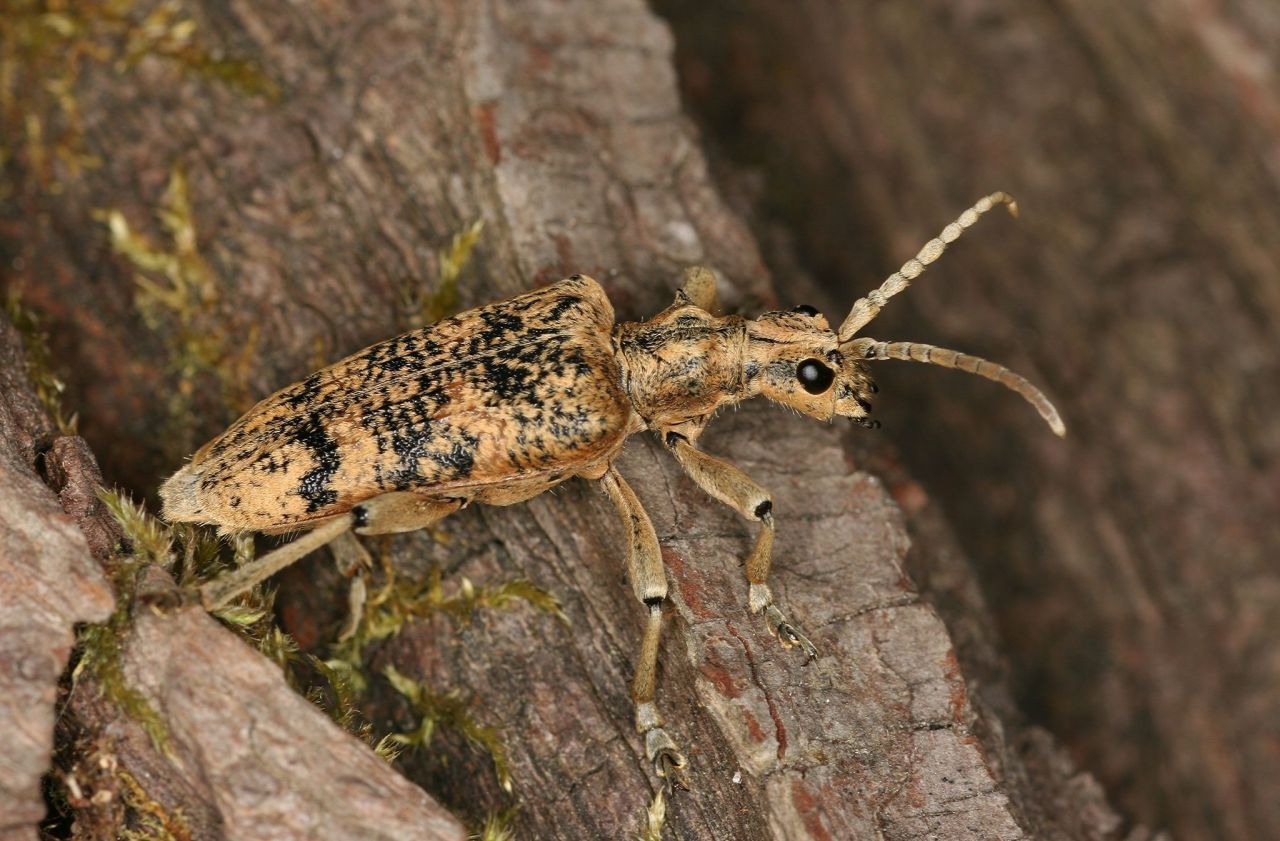
The longhorn beetle Rhagium sycophanta, a wood-dwelling species from the Red List found in Lothar storm areas. Image: © Beat Wermelinger
The return to "forest fauna"
The natural reforestation process and the return of windthrow fauna to the typical species assemblage of a closed forest depend largely on altitude. In the pre-alpine regions affected by storm Vivian, the insect, spider, and woodlouse communities only began to resemble those of a forest after 10 years. Even after 20 years, the similarity was just 30%.
In contrast, in the Central Plateau, the insect species composition in the Lothar storm areas started to approach that of an intact forest early on, reaching a similarity of 50% after 20 years. Due to temperature differences and differing pioneer vegetation composition, the return (resilience) of ecosystems to their original state takes longer in mountain forests.
What do these findings mean?
Occasional disturbances like storms or fires are part of a forest’s natural dynamics. Nature has the ability to recover from events that we consider catastrophic, often returning to its original state relatively quickly in forest time scales.
Human interventions, such as harvesting the windthrown wood and planting young trees, are only necessary if we have additional expectations for the forest – such as rapid restoration of timber production or protective functions against avalanches or landslides.
Long-term studies of insect fauna in windthrow areas show that, compared to undamaged, closed forests, these disturbed areas serve as an important resource for endangered species and contribute significantly to biodiversity. In storm-created gaps within a homogeneous forest, species that are rare in closed forests can increase their populations and exchange genes with those in other similar habitats.
Not least, other animals like birds, reptiles, and bats benefit from the high insect availability. Most herbaceous plants and shrubs also rely on insects as pollinators for reproduction.

Uncleared windthrows develop into extremely valuable habitats. Image: © Beat Wermelinger
What should we do after the next storm?
After a major storm, urgent measures such as clearing roads and securing infrastructure are undoubtedly necessary. However, regarding the ecological consequences of traditional wood removal, findings indicate that – as is often the case – a high diversity of habitats and structures supports a high diversity of species.
This means that ideally, a significant portion of storm areas or fallen trees should be left in place. However, salvaging part of the fallen timber is not detrimental either, particularly where it makes sense financially. A combination of cleared and uncleared windthrow areas, along with intact forests, best supports regional forest biodiversity.
References
Wermelinger B et al. 1995. Die Entwicklung der Fauna auf Windwurfflächen mit und ohne Holzräumung. Schweiz. Z Forstwes 146: 913-928. https://www.dora.lib4ri.ch/wsl/islandora/object/wsl%3A3433/datastream/PDF/Wermelinger-1995-Die_Entwicklung_der_Fauna_auf-%28published_version%29.pdf
Schönenberger W et al. 2003. Vivians Erbe – Waldentwicklung nach Windwurf im Gebirge. Merkbl Prax WSL 36, 12 S. https://www.dora.lib4ri.ch/wsl/islandora/object/wsl%3A9123/datastream/PDF/Sch%C3%B6nenberger-2003-Vivians_Erbe._Waldentwicklung_nach_Windwurf-%28published_version%29.pdf
Wermelinger B et al. 2017. Impact of windthrow and salvage-logging on taxonomic and functional diversity of forest arthropods. For Ecol Manage 391:9-18. https://doi.org/10.1016/j.foreco.2017.01.033
Wermelinger B et al. 2025. Two decades of arthropod biodiversity after windthrow show different dynamics of functional groups. J Appl Ecol https://doi.org/10.1111/1365-2664.14860
Wermelinger B. 2021: Insekten im Wald – Vielfalt, Funktionen und Bedeutung. 2., aktualisierte Auflage. Eidg. Forschungsanstalt WSL, Birmensdorf; Haupt, Bern, 368 S. https://www.haupt.ch/buecher/natur-garten/Insekten-im-Wald.html
